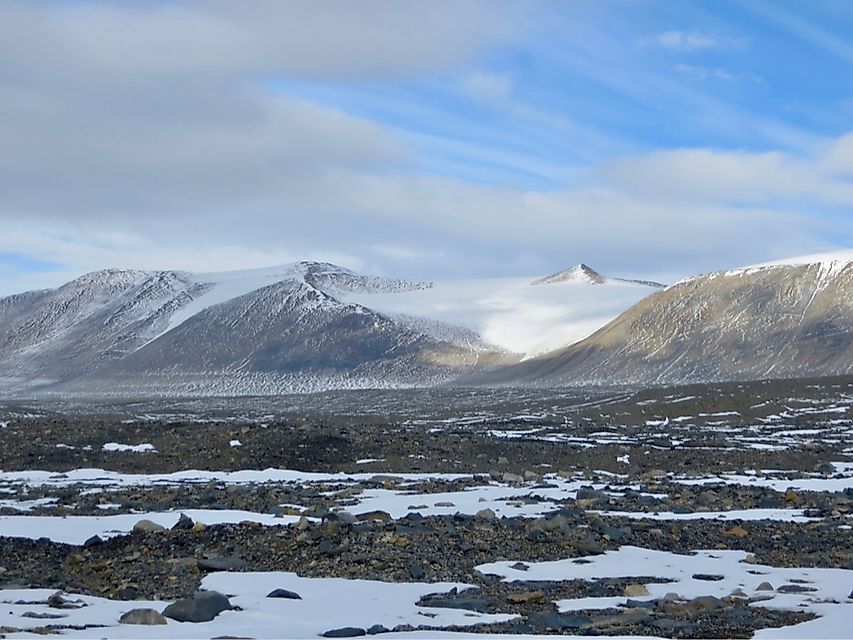What Are the Dry Valleys of Antarctica?

What Are the Dry Valleys of Antarctica?
The Dry Valleys of Antarctica refers to the McMurdo Dry Valleys, which are located in the Transantarctic Mountains of Victoria Land, Antarctica. Instead of being covered in snow and ice like most valleys in Antarctica, the Dry Valleys are dry and covered with dirt, granite, and gravel. The low humidity levels prevent precipitation from forming and the high sides have kept glaciers from sliding down into the base of the valleys. This part of the continent is home to the Onyx River, which connects Lake Vanda and Lake Brownworth and is considered the continent's longest river. Additionally, Lake Vida is located in the McMurdo Dry Valleys, and has a higher salinity level than the surrounding ocean, and therefore harbored frozen 2,800-year-old microbes that were brought back to life in 2002. A number of other bodies of water are found here, including Lake Miers, Don Juan Pond, and Kite Stream.
The McMurdo Dry Valleys are made up of 15 separate valleys. Of these 15 valleys, the principal formations are: the Taylor Valley, Wright Valley, and Victoria Valley.
Taylor Valley
Taylor Valley is located at the southernmost point of the dry valley region in Antarctica and measures approximately 18 miles in length. Taylor Glacier once occupied the majority of the valley, although over time the glacier receded and is now located on the western side of Taylor Valley. To its east sits the New Harbour Bay. The valley is home to several bodies of water, including: Mummy Pond, Parera Pond, Lake Chad, Lake Fryxell, Lake Bonney, Lake Chad, Lake Popplewell, and Lake Hoare. It was first identified at the beginning of the 20th century by the British National Antarctic Expedition.
Wright Valley
Wright Valley is located in the middle of the three primary McMurdo Dry Valleys. To its east lies the McMurdo Sound and to its west lies the Labyrinth upland region. The valley is home to Lake Brownworth, which supplies water for the Onyx River, which is the longest river in Antarctica. Additionally, Lake Vanda, another source of water for the Onyx River, is located in Wright Valley. Despite its large size, it was one of the last McMurdo Dry Valleys to be discovered. Records indicate that it was identified during the 1940s, when aerial pictures of the region were taken. Later, in the 1960s, the Antarctic Division of New Zealand and the National Science Foundation of the United States identified the need for a permanent research base in the valley, and as a result the Vanda Station was later built. Today, it has been replaced by Lake Vanda Hut, which is a weather station.
Victoria Valley
Victoria Valley is the northernmost of the largest McMurdo Dry Valleys. It is situated between the Olympus Mountain Range to the south and the St. Johns Mountain Range to the north. To its west are three minor dry valleys: Balham, McKelvey, and Barwick. Like the other large valleys, Victoria Valley is home to a number of bodies of water, including: Victoria River (which drains into the Upper Victoria Lake), Lake Thomas, and Lake Vida (the largest lake in Antarctica).











